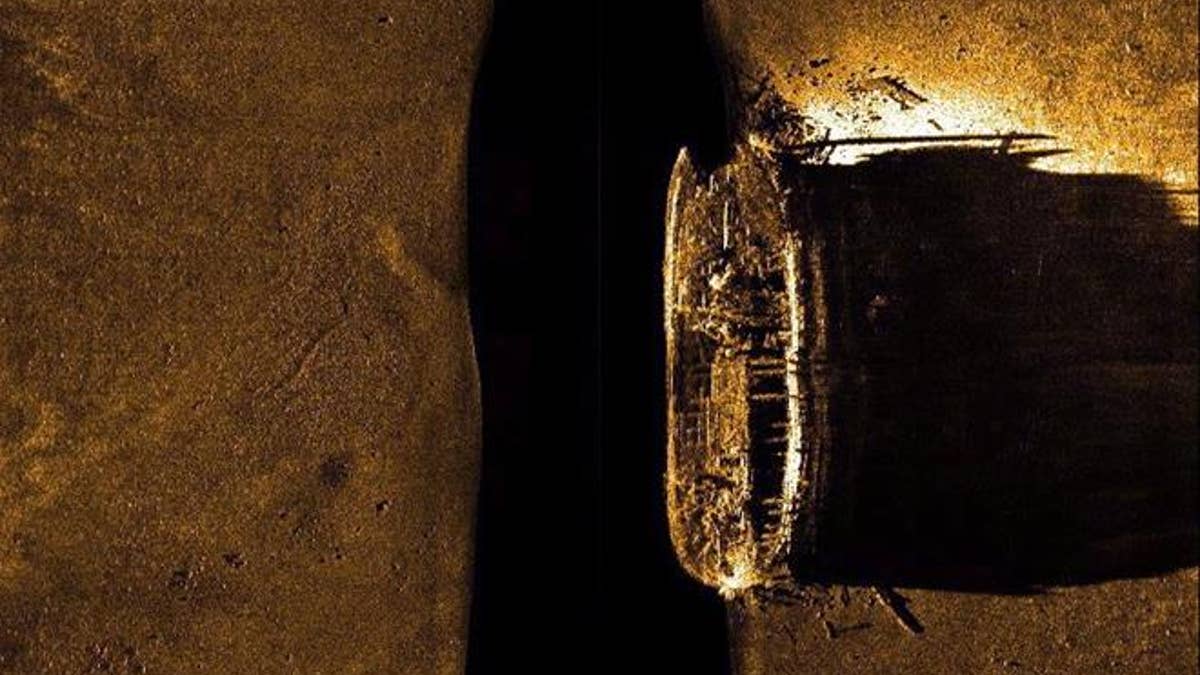Entire Arctic expedition perished, but not because of lead
{{#rendered}} {{/rendered}}
In a Sept. 9, 2014 image provided by Parks Canada, HMS Erebus is pictured on a sonar scan in the Queen Maud Gulf in Nunavut. (Parks Canada/The Canadian Press via AP)
In 1845, Sir John Franklin set sail from England in the hopes of discovering and successfully navigating the Northwest Passage. Instead, all 128 crew members aboard the HMS Erebus and HMS Terror ended up dead.
Nearly all of them actually survived until April 1848, when they fled ships that had been ice bound and sought help on foot, only to perish on King William Island.
Both shipwrecks were uncovered in the past four years, and Gizmodo reports "well-preserved bodies" of some of the dead sailors have been located in graves.
{{#rendered}} {{/rendered}}But what felled them all remained unknown though there was a theory: lead poisoning. Now, a study published in PLOS One concludes that wasn't it.
The theory was born from prior tests on bone, hair, and tissue taken from some sailors' remains, with the thinking being that tin cans and the ships' water filtration systems may have pushed levels upward.
The Canadian researchers laid out three hypotheses: that the sailors who survived longer would have more lead in their bones, that "bone microstructural features" that grew near the time of death would show higher levels than older tissue, and that the lead levels would be higher than those of other contemporaneous sailors.
{{#rendered}} {{/rendered}}They then used a high-resolution scanning technique to compare bone and dental remains with those from the Royal Navy cemetery in Antigua and found that none of the hypotheses held up—and so, "taken together," the researchers found the lead poisoning theory unsupported.
Where does that leave us? One of the researchers tells the CBC things could have just gradually deteriorated. "They would have been starving. They would have had nutritional deficiencies." (Read about Franklin's wife's relentless mission to find her missing husband.)
This article originally appeared on Newser: Entire Arctic Expedition Perished, but Not Because of Lead
{{#rendered}} {{/rendered}}